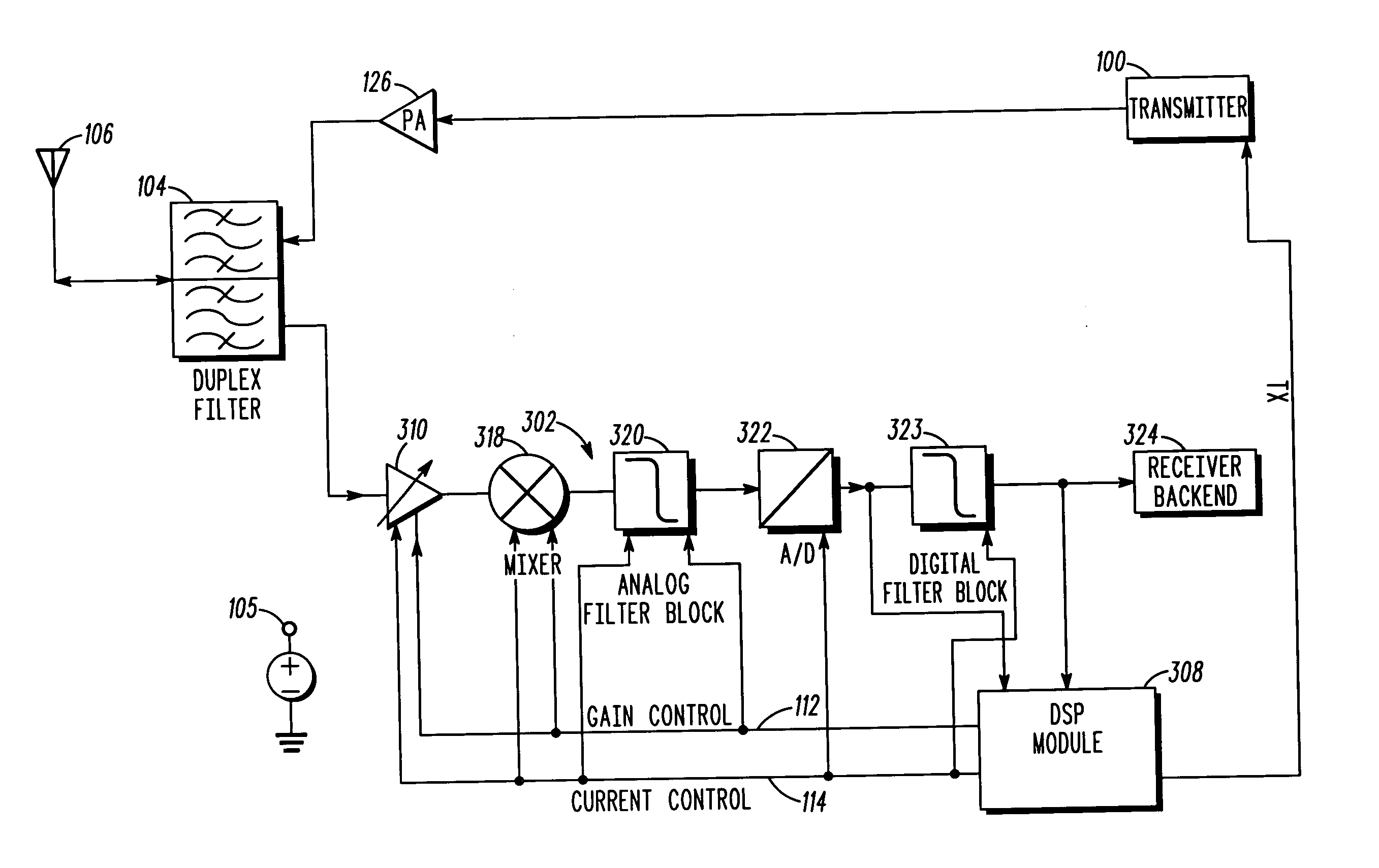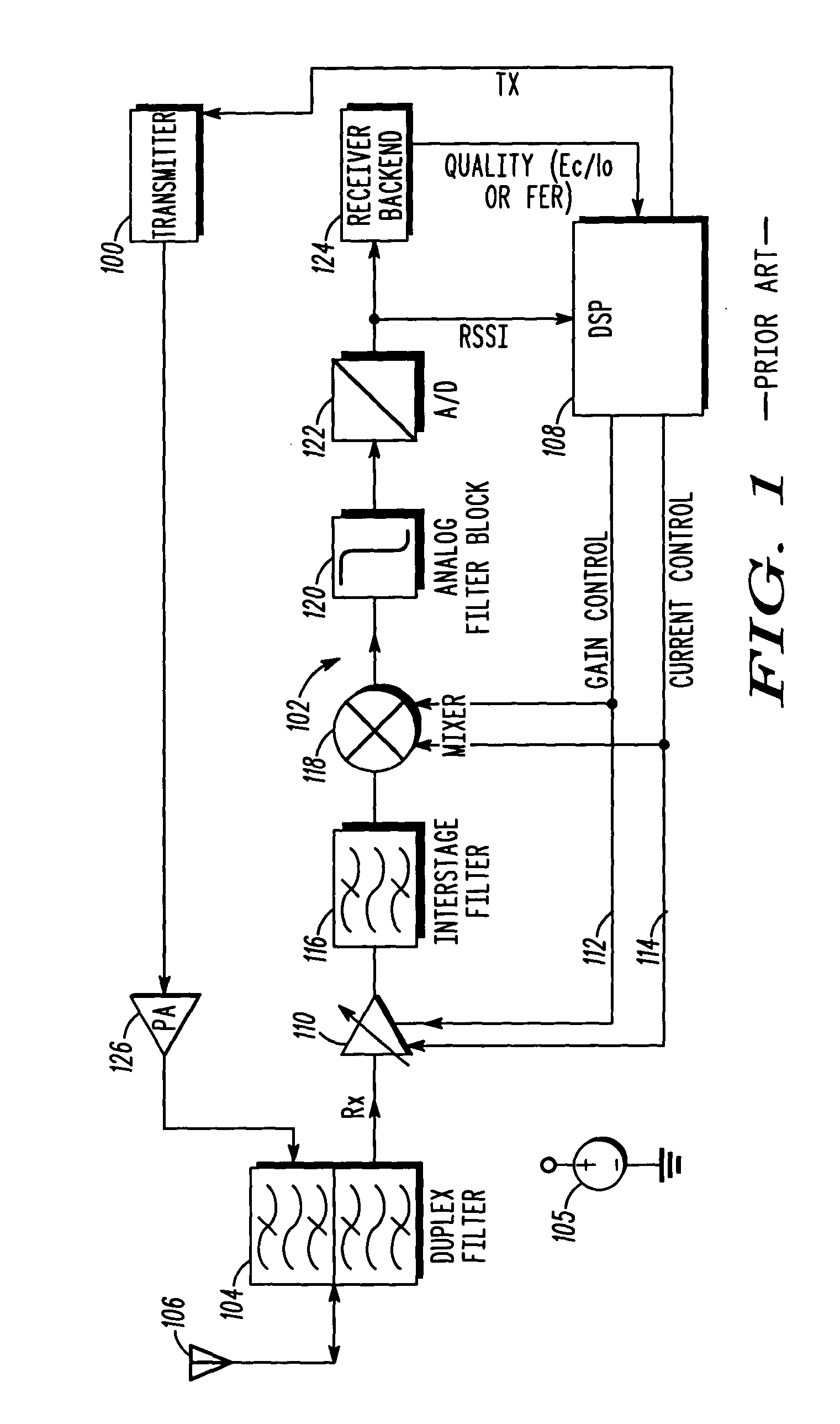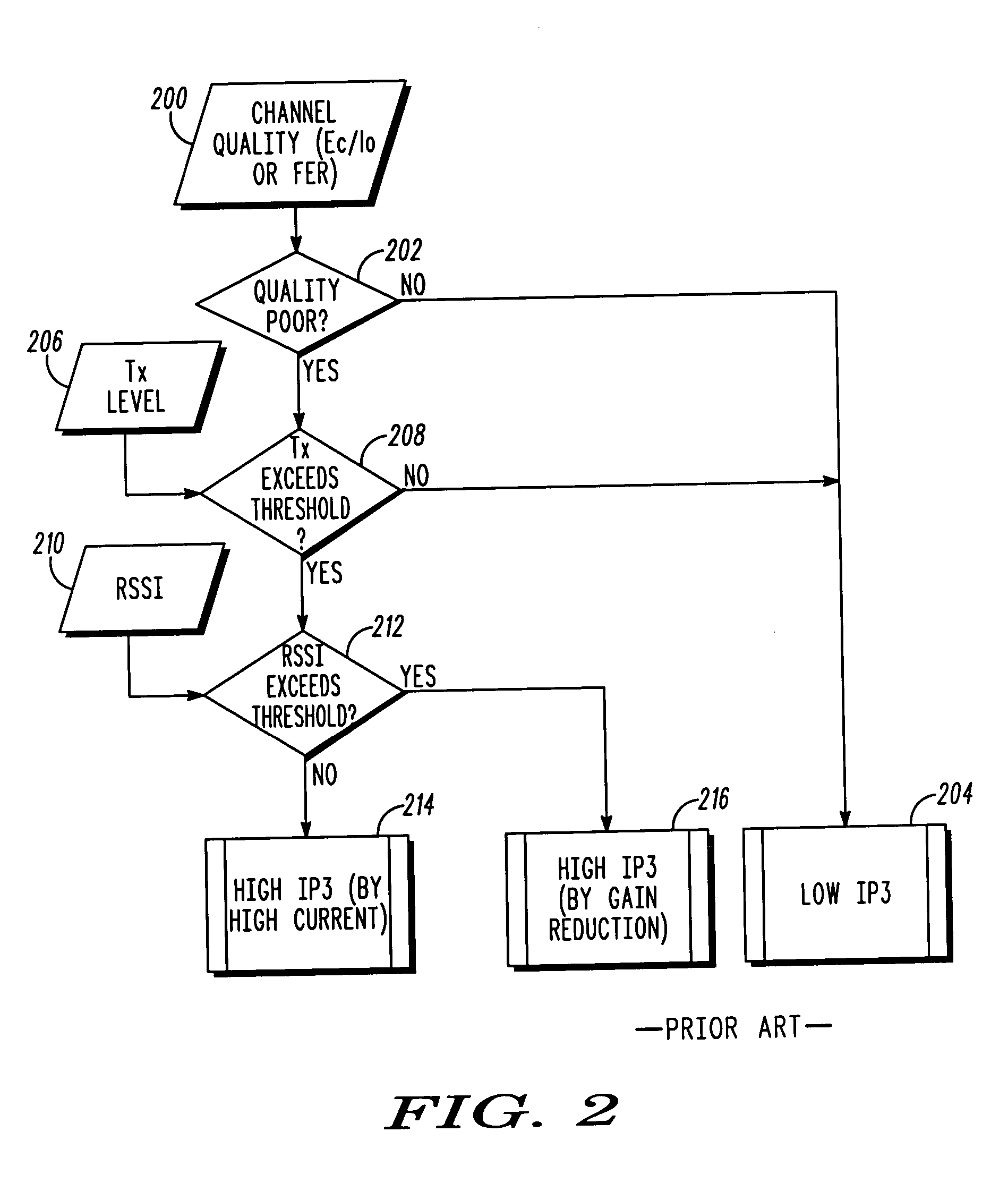Current reduction by dynamic receiver adjustment in a communication device
a communication device and dynamic adjustment technology, applied in the direction of transmission monitoring, modulation, electrical apparatus, etc., can solve the problems of high current drain of receivers, non-linear distortion of cross-modulation and intermodulation, and inability to make the most efficient use of current drain in the prior ar
- Summary
- Abstract
- Description
- Claims
- Application Information
AI Technical Summary
Problems solved by technology
Method used
Image
Examples
Embodiment Construction
The present invention provides a unique method to improve reception in a receiver circuit for a wireless communications device in a communication system while reducing current drain. This is done by reducing the current drain in the receiver by making the elements in the receiver (mixers, amplifiers and filters) less linear when there is little or no interference, and increasing linearity again when interference exists. In particular, the present invention reduces the effects of intermodulation distortion and crossmodulation distortion by direct determination of the interference, instead of relying on channel quality, and by improving linearity of the receiver only when non-linear distortion products are anticipated. This improvement is accomplished without any significant additional hardware or cost in the communication device. Moreover, the present invention can take advantage of existing high dynamic range devices such as analog-to-digital converters and digital filters in combi...
PUM
 Login to View More
Login to View More Abstract
Description
Claims
Application Information
 Login to View More
Login to View More - R&D
- Intellectual Property
- Life Sciences
- Materials
- Tech Scout
- Unparalleled Data Quality
- Higher Quality Content
- 60% Fewer Hallucinations
Browse by: Latest US Patents, China's latest patents, Technical Efficacy Thesaurus, Application Domain, Technology Topic, Popular Technical Reports.
© 2025 PatSnap. All rights reserved.Legal|Privacy policy|Modern Slavery Act Transparency Statement|Sitemap|About US| Contact US: help@patsnap.com



